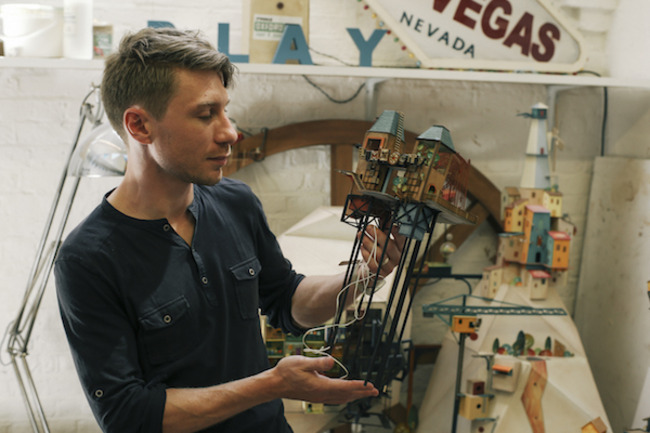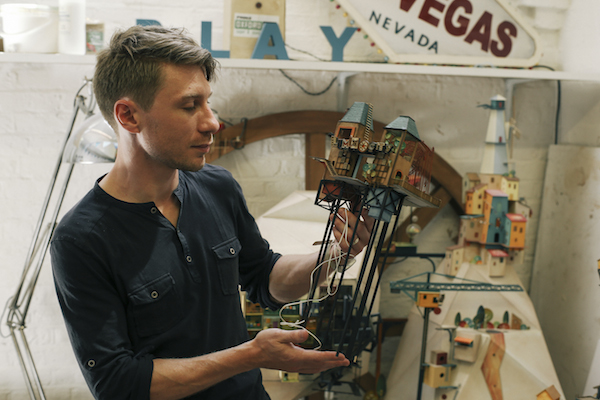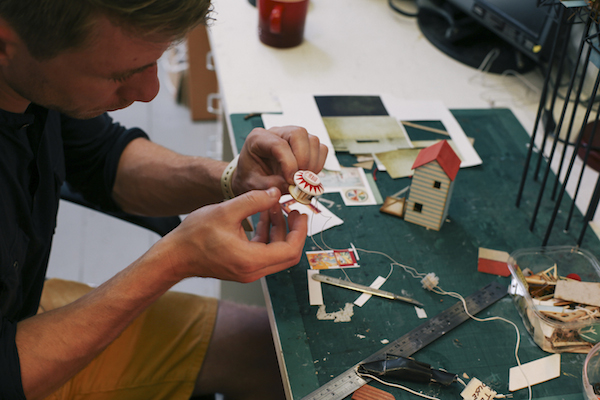State of Play: Luke Whittaker
We talk to the head of State of Play studios about the role of artistic ingenuity in the tech focused gaming industry of today


The trouble with forward thinking is, if everyone’s doing it, it can almost become self-defeating. A revolution doesn’t have the same sting if everyone’s barking up the same tree. Progressive thinking is instilled in the gaming industry; to innovate is to conform, but innovation doesn’t always mean breaking and creating frontiers. Luke Whittaker, director of State of Play Games in London is one of those computer game designers eschewing technological advances in favour of artistic purity. “There is an accepted way of making games that is dictated by new technology”, he says. “We’re using technology that we could have used 10 years ago but we’re led by an idea, not technology. If you start looking at the technology first and think what can I make with these tools, the likelihood is that you’re making something that’s gone before.”
I think we’re at a great time where the barriers to entry are really low, you can make games with a laptop and a pencil and paper, you don’t need much more, State of Play are about to release Lumino City, a wondrous sprawling puzzle adventure game, made entirely from paper, card, wood, miniature lights and electric motors, brought to life with superimposed animated characters. The model of the city stands, somewhat precariously, over 10 feet tall. A miniature municipality built from dozens of delicate houses each taking over three weeks to create. Admittedly it’s not the first game to be shot on a physical set, the beautifully crafted game TheNeverhood received a huge fan base in the mid 90s but to everyone’s knowledge, that claymation offering was Lumino City’s only precursor. “Perhaps one of the reasons it’s not done a lot is because it’s hard to do. It’s a labour of love, you really need to understand everything about your game before you make it, which is not the usual way of making games,” says Whittaker.
A labour of love indeed. Three years ago, unable to commit to building a city so large (the whole project is completely self funded), the team created a smaller puzzle game called Lume to test the technology. Lume was never thought of as a proof of concept, says Whittaker, it could have been fatal to think like that, but when it won numerous gaming awards in 2011/12, the green light was given to up-size. After three years of sketches, revised sketches, grey board versions, concept sketches, laser cuts, assembling, filming and finally programming, the game is nearing completion.
Building things is Whittaker’s bread and butter. His mother is a fine artist, his father a Silversmith (and a hobby board game maker), so naturally Whittaker spent his childhood whittling bows and arrows and has grown into an artisan of the video game world. “I think it is probably becoming a more artistic sphere to work in, it’s the most exciting one for me anyway. I think we’re at a great time where the barriers to entry are really low, you can make games with a laptop and a pencil and paper, you don’t need much more,” he says. “I think more artistically inclined people are starting to see the possibilities of it, maybe we’ve gone through the first stage of development where it’s been about a lot of technology development. Maybe we’re not plateauing but we’re at a stage where people can go ‘OK this is possible and I could do something interesting with it.’”
There’s an historic affiliation between the artists and independent companies, something in the artist’s blood that shuns the corporation. The rise of indie games is very much in keeping with an influx of artistic types to the gaming industry, those with something to say via the medium rather than to wanting to instantly cash in. It’s taken a long time to get there but could the gaming industry be the stomping ground for the next generation of creatives? “To me it’s such a vibrant place to work because you’ve got so many different things you can do, and now we need to understand interaction which is a whole new sphere”, says Whittaker. “By comparison other types of media start to seem a little lifeless because in a way, they don’t have the depth. You can argue that film perhaps has reached a level where it’s just reinventing the wheel.”

Meanwhile, the future’s undeniably bright, yet difficult to predict for the gaming sector. Whittaker is reluctant to prophesise what the future holds for State of Play, conceding that, five years ago, he could have never have predicted the rise of gaming communities like Steam, or the ease at which we can now make and sell games for mobile. “The future of gaming is probably going to be diverse. There’s not going to be one future of games, we can already see lots of different companies moving in different directions, people pushing the technology as far as it can go with the likes of Oculus Rift, there are big companies experimenting with multiplayer and you have these huge open worlds where they want the future to be everyone connected.”
The tech bandwagon is gaining unprecedented momentum, especially in the case of virtual reality, where admittedly it seems the more cooks, the better the broth. But while so many pursue the gaming holy grail, it’s refreshing to see someone creating a game that captivates, not through headsets and overblown special effects but through artistic statement and good old fashioned imagination. A timeless game for an ever-evolving industry.
http://www.stateofplaygames.com/
To see Luke, and other gaming experts, discuss the future of the gaming industry, have a watch of the videos from our recent Forum, The Next Level for Video Games.



Discussion